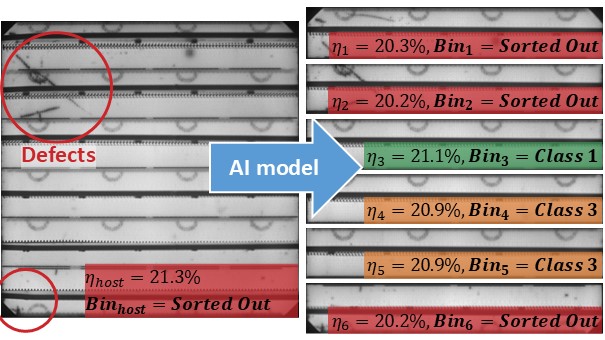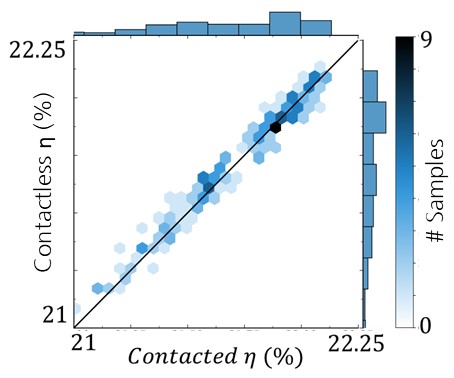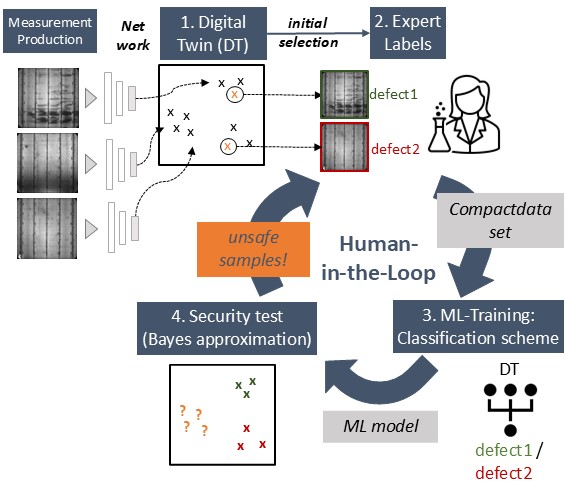Successful quality control in the running production process requires fast and meaningful processing of extensive sensor data from different sources. For this, we develop multimodal deep learning models that enable quality assessment of the sample.
In numerous fields of application, processes are being developed that significantly improve the manufacturing, development and production of wafers and solar cells along the entire value chain. With our interdisciplinary expertise in artificial intelligence and photovoltaics, we implement task-specific AI models for this purpose. We have extensive measurement technology at our disposal, which is used to characterize the samples and "intelligently" train the models.
Two examples are presented below:



